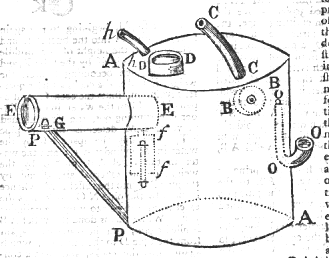Cornelius Drebbel
Today, an invention is an omen of freedom. The University of Houston's College of Engineering presents this series about the machines that make our civilization run, and the people whose ingenuity created them.
The late 1500s were no great age of invention. These were the dog days of the Renaissance. It was an age of art, poetry, and religious strife. It was a tide of warring kings and satraps.
Cornelius Drebbel was born into this world in 1572, in Holland. He studied engraving. He was good at it.
His teacher was also an alchemist. He taught Drebbel more than art. He also taught him the chemistry of the late 1500s. Drebbel set himself up as a maker of maps and pictures. But it was the material world that'd laid its hold on his mind.
The fusion of art and science is, of course, technology. When Drebbel wed the two, they led him directly to inventing.
He patented a pump and a clock. He invented a thermometer and a chimney. He created a new dye. It was a bright scarlet that came from a chemical reaction with tin. He built a perpetual-motion machine. Well, not really! It was actually a clock driven by atmospheric-pressure changes. You never had to wind it.
King James brought Drebbel to London in 1606. Drebbel made the first submarine there. It was open at the bottom like a diving bell, and it held several people. A rower on the surface powered it. Some reports say Drebbel had chemical means for regenerating the air down below.
Drebbel's greatest invention was more modest. At least so it seemed. It was a chicken incubator with a new feature. Warm air flowed around it and out through a valve. He made control of that valve automatic. His work with thermometers, chemicals, and chimneys all came together in a mercury device that held the temperature constant. He made the first thermostat.
This was a time of warring dukes and barons, all fighting for control. Drebbel flew in the face of that. He invented the first modern device that gave human control away -- to a machine.
150 years later, a great sun-spray of feedback control devices appeared. Inventors poured them out during the great revolutions of the late 1700s. Suddenly we had fly-ball governors, float valves, and pressure regulators. Adam Smith gave us laissez-faire. He extended feedback control to economics.
The greatest feedback control device of them all was the American Constitution, with its built-in checks and balances. It took control away from princes. It let us regulate ourselves.
So Drebbel was far ahead of his time. He had a crystal-ball vision of the future. He had instinctive freedom of the mind. And his strange incubator proved to be the first shot fired in the revolutions that would finally set us free.
I'm John Lienhard, at the University of Houston, where we're interested in the way inventive minds work.
(Theme music)
Edelstein, S., Drebbel, Cornelius. Dictionary of Scientific Biography (C.C. Gilespie, ed.). Charles Scribner's Sons, 1970-1980.
My assertions about feedback control are verified in the following book by Mayr and in his subsequent writings.
Mayr, O., The Origins of Feedback Control. Cambridge, MA: M.I.T. Press, 1970.

Image courtesy of Special Collections, UH Library
Schematic diagram for a submarine in the 1747 Gentleman's Magazine, probably based on Drebbel's design